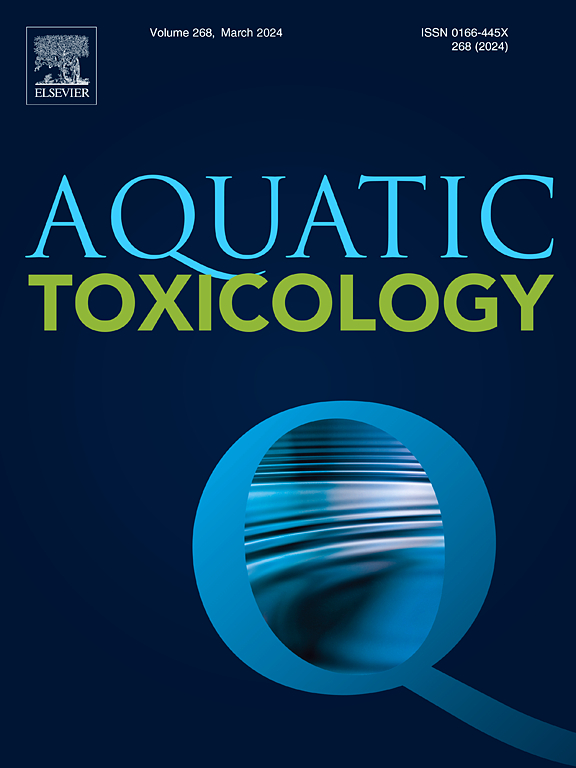Neurotoxicity and aggressive behavior induced by anesthetic etomidate exposure in zebrafish: Insights from multi-omics and machine learning
IF 4.1
2区 环境科学与生态学
Q1 MARINE & FRESHWATER BIOLOGY
引用次数: 0
Abstract
Etomidate (ETO), widely employed as a surgical anesthetic and more recently recognized as a drug of abuse, has been frequently detected in aquatic environment. However, the toxicity assessment of ETO is insufficient. Adult zebrafish were used to investigate toxicological effects of ETO. Four weeks ETO exposure could induced abnormal behaviors, including reduced anxiety, memory impairment, and heightened aggression. The increased aggression was quantitatively characterized using machine learning, which revealed significantly elevated instantaneous velocity and drastic changes in angular velocity. ETO was predominantly accumulated in the zebrafish brain, where it binds to GABA-A receptors, leading to a significant increase in GABA content. Furthermore, fluorescent staining of reactive oxygen species (ROS) in the brain revealed that ETO exposure significantly increased the oxidative stress level. This oxidative stress resulted in mitochondrial swelling, rupture, and damage to myelinated nerve fibers, ultimately causing cerebral injury in zebrafish. Multi-omics analysis further elucidated that ETO exposure down-regulated the MAPK signaling pathway, hyperactivated motor proteins, and induced metabolic disorders of lipids and amino acids. In summary, this study demonstrates that ETO induces neurotoxicity and behavioral alterations in zebrafish. These findings provide a critical insight into the mechanisms underlying ETO's neurotoxic effects and contribute to a more comprehensive understanding of its environmental and health risks.
求助全文
约1分钟内获得全文
求助全文
来源期刊

Aquatic Toxicology
环境科学-毒理学
CiteScore
7.10
自引率
4.40%
发文量
250
审稿时长
56 days
期刊介绍:
Aquatic Toxicology publishes significant contributions that increase the understanding of the impact of harmful substances (including natural and synthetic chemicals) on aquatic organisms and ecosystems.
Aquatic Toxicology considers both laboratory and field studies with a focus on marine/ freshwater environments. We strive to attract high quality original scientific papers, critical reviews and expert opinion papers in the following areas: Effects of harmful substances on molecular, cellular, sub-organismal, organismal, population, community, and ecosystem level; Toxic Mechanisms; Genetic disturbances, transgenerational effects, behavioral and adaptive responses; Impacts of harmful substances on structure, function of and services provided by aquatic ecosystems; Mixture toxicity assessment; Statistical approaches to predict exposure to and hazards of contaminants
The journal also considers manuscripts in other areas, such as the development of innovative concepts, approaches, and methodologies, which promote the wider application of toxicological datasets to the protection of aquatic environments and inform ecological risk assessments and decision making by relevant authorities.
 求助内容:
求助内容: 应助结果提醒方式:
应助结果提醒方式:


